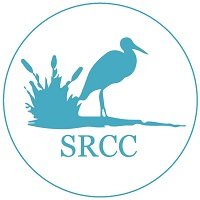Eutrophication
Many people apply fertilizer to their lawns to help keep it green and healthily growing. This is a relatively normal practice that to most extents, doesn’t have many straightforward negative consequences. However, there is a great impact from it that isn’t often spoken of.
Eutrophication is an obstructive and adverse process that occurs in bodies of water. It begins with an overabundance of nutrients finding their way into these waters. These nutrients, phosphorus and nitrogen, most commonly come from farmland runoff, sewage, and industrial waste. As this is released into water, the nutrients begin to cause great growth for the aquatic plants. Specifically, it immensely increases the amount of algae found in these areas; this is called an algal bloom. As more and more algae grow, they consume greater amounts of oxygen. While doing this, they also prevent sunlight from reaching the other aquatic plants. This causes a great decrease in photosynthesis and for many of those plants to die. As these plants and the algae die, aerobic decomposition takes place. The microbes and bacteria that do this then use even more oxygen for the process, completely depleting the area of oxygen. This causes hypoxia. Because of the low oxygen levels, life cannot be supported in these areas, leading to them often being called a “dead zone.” This means that most of the life there dies, or is forced to migrate if possible.
The impacts of eutrophication carry on to the detriment of us along with aquatic animals. When the process occurs, water quality degrades, recreational activities lessen, and there is the reduction of economic benefits from fisheries. This is all far from desirable and needs to be prevented to sustain aquatic life. While the main sources of the excess nutrients are farms, factories, and sewage treatment plants, there are many things we can all do to help as well.
Phosphorus and nitrogen are key ingredients in the fertilizers that many use for their lawns. When it rains, any excess fertilizer from these lawns can collect in runoff and carry into nearby bodies of water. This then contributes to the start of the detrimental eutrophication process. To help prevent this, one should try to use the right amount of fertilizer, in the right way, and at the right times. Learn about exactly what kind of fertilizer is needed for your grass type to insure it is properly utilized. Also, don’t fertilize when the conditions aren’t right. If it’s too cold or too hot, the roots will have a difficult time retaining or absorbing any nutrients. Lastly, wait several days after, or plan several days before it rains to use fertilizer. All of these tips will help to make sure that one’s fertilizer is doing its job and used properly. This way, the nutrients it provides will be absorbed into the soil and benefit the grass and plants as it is supposed to, rather than runoff into nearby bodies of water.
Animal waste also contains these nutrients, so it is important that we properly dispose of pet waste so as to prevent it from making its way into lakes, rivers, etc. Start using soaps and detergents that don’t contain any phosphates. Start eating less meat to reduce the demand since much nutrient runoff comes from livestock. Advocate for better sewage treatment and waste management in your areas along with better fertilizer regulations. Do everything you can to learn more and do better. Share this information with others and take on the responsibility of helping your environment.
